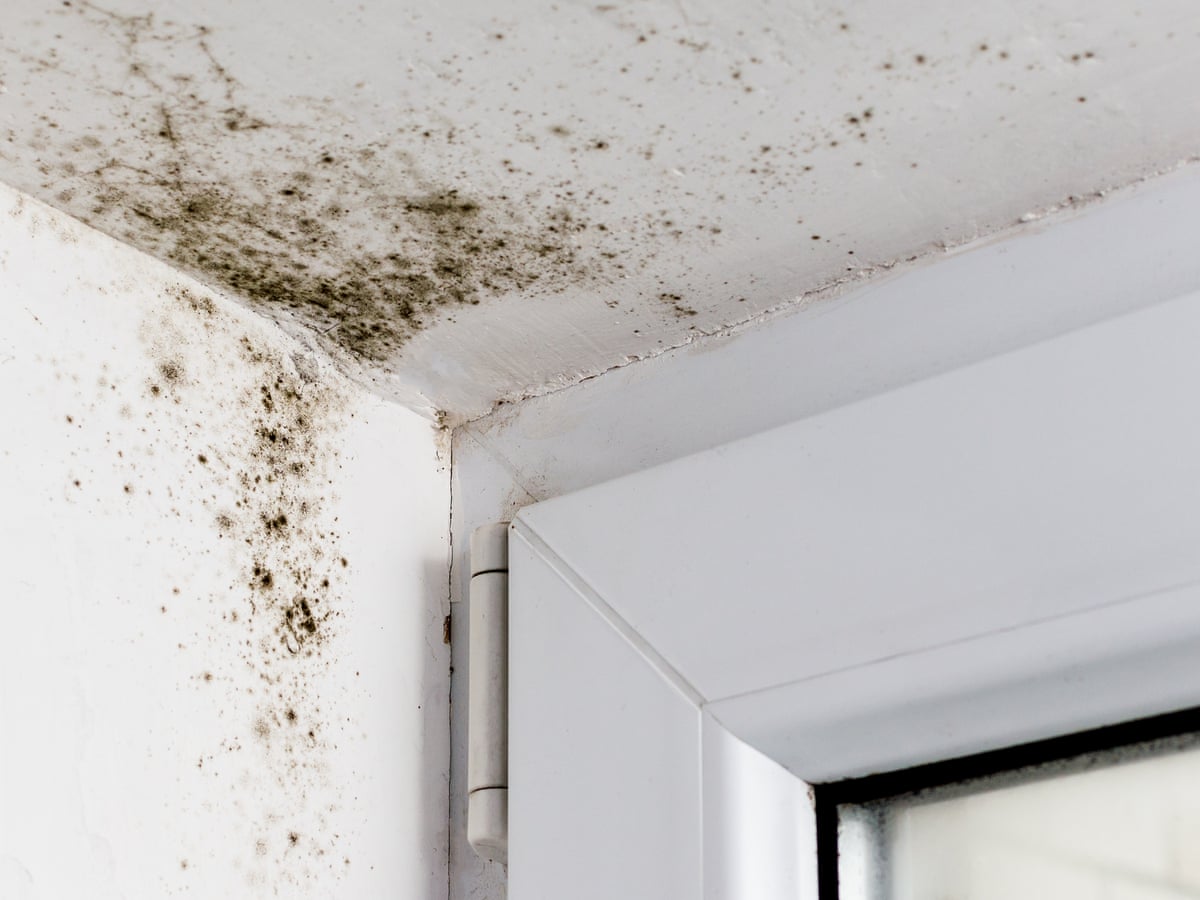

Articles
What Does Mold Look Like On Ceiling
Modified: May 6, 2024
Looking for articles on what mold looks like on ceiling? Discover the visual cues and signs of mold growth on ceilings in this informative guide.
(Many of the links in this article redirect to a specific reviewed product. Your purchase of these products through affiliate links helps to generate commission for Storables.com, at no extra cost. Learn more)
Introduction
Welcome to the ultimate guide on mold growth on ceilings. Mold is a common problem that affects many homeowners, and it can be particularly concerning when it appears on the ceiling. Not only does ceiling mold look unsightly, but it can also pose health risks and indicate underlying issues in your home.
Understanding mold on ceilings is essential for identifying, preventing, and treating this issue effectively. In this article, we will delve into the various types, physical characteristics, and signs of ceiling mold. We will also explore the causes and health risks associated with it, as well as provide tips on prevention and treatment.
So, whether you’ve recently noticed mold on your ceiling or you’re looking to prevent its occurrence, you’ve come to the right place. Let’s dive into the fascinating world of mold on ceilings and equip ourselves with the knowledge to tackle this problem head-on.
Key Takeaways:
- Understanding the types, characteristics, and causes of mold on ceilings is crucial for prompt identification, effective treatment, and prevention. By recognizing signs and symptoms, homeowners can take timely action to address the problem and maintain a healthy living environment.
- Proper ventilation, moisture control, regular maintenance, and safe removal practices are essential for preventing and treating mold on ceilings. By staying vigilant and seeking professional assistance when needed, homeowners can ensure a mold-free and healthy home environment.
Read more: What Does Mold In A Carpet Look Like
Understanding Mold on Ceilings
Mold is a type of fungus that thrives in moist and humid environments. When it comes to ceilings, mold growth is commonly found in areas with poor ventilation, water leaks, or high levels of humidity. These conditions create the perfect breeding ground for mold spores to settle and colonize on ceiling surfaces.
Mold growth on ceilings can occur in any room, including bathrooms, kitchens, and basements, where moisture is more prevalent. Ceilings made of materials such as drywall, plaster, or acoustic tiles are particularly susceptible to mold growth due to their porous nature, which provides an ideal surface for mold to grow.
The presence of mold on ceilings is not only an aesthetic concern but also a potential health hazard. Mold releases spores into the air, which can be inhaled and cause respiratory issues, allergies, and exacerbate asthma symptoms. Additionally, prolonged exposure to mold can lead to more severe health problems, such as respiratory infections and even mold-related illnesses.
Therefore, it is crucial to understand the types, characteristics, and signs of mold on ceilings to take appropriate measures for its prevention and removal.
Common Types of Ceiling Mold
Mold growth on ceilings can manifest in various forms, each with its distinct characteristics. Understanding the different types of mold commonly found on ceilings can help you identify and address the issue effectively. Here are some of the most common types of ceiling mold:
- Aspergillus: Aspergillus is a common type of mold found on ceilings. It appears as fluffy patches that can be a range of colors, including green, brown, or black. Aspergillus is known to cause allergies and respiratory problems.
- Cladosporium: Cladosporium is another prevalent type of ceiling mold. It often appears as black or greenish-black clusters with a powdery or velvety texture. Cladosporium is a trigger for allergies and can cause respiratory issues.
- Stachybotrys: Stachybotrys, also known as black mold, is one of the most concerning types of ceiling mold. It appears as slimy, black patches and is typically found in areas with chronic moisture issues. Black mold is known to produce mycotoxins, which can have severe health effects, including respiratory problems and even neurological symptoms.
- Penicillium: Penicillium is a common mold that can appear on ceilings. It often exhibits a bluish-green or green mold-like growth. Penicillium can cause allergies and respiratory issues in susceptible individuals.
- Alternaria: Alternaria is a common outdoor mold that can also grow on ceilings in damp conditions. It appears as dark brown or black patches with a fuzzy texture. Alternaria is known to trigger allergies and exacerbate asthma symptoms.
These are just a few examples of the various types of mold that can be found on ceilings. It’s important to note that mold identification is best left to professionals, as certain types may require specific handling or remediation methods. If you suspect mold growth on your ceiling, it is advisable to consult a mold remediation specialist for a proper assessment and treatment plan.
Identifying Mold on Ceilings
Identifying mold on ceilings is essential for taking appropriate actions to address the problem. Although mold can vary in appearance, there are some common signs and characteristics that can help in its identification:
- Visible patches: Mold on ceilings often appears as visible patches or discoloration. These patches can have different colors, such as black, green, brown, or even white.
- Musty odor: Mold growth is often accompanied by a musty odor. If you detect an unpleasant, earthy smell coming from your ceiling, it could be a sign of mold presence.
- Water stains: Mold growth can be associated with water leaks or moisture issues. If you notice water stains or discoloration on the ceiling, it could indicate an underlying mold problem.
- Peeling paint or wallpaper: Mold growth can cause the paint or wallpaper on the ceiling to peel or bubble. This occurs due to the moisture seeping through the surface and affecting the adhesion of the paint or wallpaper.
- Texture changes: Mold-infested areas may exhibit changes in texture. It can appear fuzzy, velvety, or even slimy, depending on the type of mold present.
- Allergic reactions: Mold allergies can manifest through various symptoms, including sneezing, coughing, itchy eyes, and nasal congestion. If you experience these symptoms consistently when in a certain area of your home, it could be due to mold on the ceiling.
It’s important to note that mold can sometimes hide behind ceiling tiles, in insulation, or within the structure of the ceiling. In such cases, professional mold testing may be necessary to accurately identify the presence and extent of mold growth.
If you suspect mold on your ceiling based on these signs, it’s crucial to take action promptly to prevent further damage and potential health risks. Consult a licensed mold remediation specialist who can provide a thorough inspection and recommend the appropriate steps for mitigation and removal.
Physical Characteristics of Ceiling Mold
Ceiling mold can exhibit a variety of physical characteristics, which can provide clues about the type and severity of the infestation. Understanding these characteristics can help homeowners and professionals assess and address the issue effectively. Here are some common physical characteristics of ceiling mold:
- Texture: The texture of ceiling mold can range from fuzzy or velvety to slimy or powdery. The specific texture depends on the type of mold and its growth stage.
- Appearance: Mold on ceilings can appear as patches, spots, or streaks. These growths can be discolored, with colors including black, green, brown, or white.
- Size and shape: Mold colonies on ceilings can vary in size and shape. They can start as small specks and gradually expand and merge into larger patches if left unaddressed.
- Moisture dependence: Ceiling mold thrives in damp environments, so its growth often indicates an underlying moisture problem. Mold may appear near areas where moisture is present, such as around plumbing fixtures, roof leaks, or condensation-prone areas.
- Pattern: Mold growth on ceilings can sometimes form distinctive patterns. These patterns can be determined by factors such as airflow, water flow, or construction elements in the ceiling.
- Growth rate: The rate at which mold grows on ceilings can vary depending on the type of mold, the availability of moisture, and the temperature. Mold can spread quickly, leading to larger and more widespread infestations if not addressed promptly.
It’s important to note that physical characteristics alone may not be sufficient for accurate mold identification. In many cases, professional mold testing or laboratory analysis may be necessary to determine the exact type of mold present on the ceiling. This information can help guide the appropriate remediation measures.
If you notice any physical characteristics of mold on your ceiling, it’s crucial to address the issue promptly. Ignoring mold growth can lead to further damage to your ceiling and increase the risk of respiratory problems and other health issues. Consult a qualified mold remediation specialist to assess the situation and develop a comprehensive plan for mold removal and prevention.
Read more: What Does Mold Look Like On Stucco
Color Variations of Ceiling Mold
The color of mold on ceilings can vary depending on the type and stage of the infestation. Different mold species exhibit diverse colorations, which can provide valuable information about the extent and severity of the problem. Let’s explore some common color variations of ceiling mold:
- Black: Black mold, also known as Stachybotrys, is one of the most concerning types of mold. It appears as slimy and black patches on ceilings. Black mold indicates a significant moisture problem and can be associated with more severe health risks.
- Green: Green mold is a common type of ceiling mold and can be caused by various mold species, such as Aspergillus or Penicillium. It can appear as fuzzy, velvety, or powdery patches. Green mold is often associated with respiratory issues and allergies.
- Brown: Brown mold on ceilings is typically caused by molds like Alternaria or Cladosporium. It can range in shades from light brown to dark brown. Brown mold is known to trigger allergies and respiratory symptoms.
- White: White mold on ceilings is less common but can still occur, typically caused by molds like Aspergillus or Penicillium. It may appear as fluffy or powdery patches with a whitish-gray hue. While white mold is less visually striking, it can still pose health risks if left untreated.
- Yellow: Yellow mold growth on ceilings can be due to several mold species, such as Aspergillus or Serpula lacrymans. It can appear as powdery or fuzzy patches with a yellowish hue. Yellow mold can trigger allergies and respiratory issues in sensitive individuals.
It’s important to note that mold colors can sometimes vary depending on the stage of growth and the presence of other factors such as dirt or debris. Additionally, mold colonies can exhibit multiple colors, especially as they mature or interact with other molds.
If you notice any color variations on your ceiling that resemble mold growth, it’s important to take appropriate action. Consult a professional mold remediation specialist to assess the situation accurately and implement the necessary steps for mold removal and prevention.
Texture and Surface Appearance of Ceiling Mold
The texture and surface appearance of ceiling mold can provide valuable information about the type and stage of the mold growth. Understanding these characteristics can help in identifying the mold and taking appropriate remediation measures. Let’s explore the common textures and surface appearances of ceiling mold:
- Fuzzy: Many types of mold appear fuzzy on the surface. These mold colonies often have a soft, velvety texture, similar to a carpet or suede. Mold with a fuzzy texture is commonly found in areas with high humidity, poor ventilation, and organic material for it to feed on.
- Slimy: Some molds, such as black mold (Stachybotrys), have a slimy texture. These mold colonies feel wet or moist to the touch. Slimy molds typically occur in areas with chronic moisture problems or water damage, such as leaky roofs or plumbing issues.
- Powdery: Certain mold types, like Aspergillus or Penicillium, can have a powdery texture. The mold appears as a dusty layer on the ceiling surface, similar to the texture of flour or baking soda. Powdery mold is commonly found in areas with high humidity and organic materials for it to feed on.
- Velvety: Mold colonies with a velvety texture have a smooth, soft, and suede-like finish. This texture is often associated with molds like green mold (Aspergillus or Penicillium). Velvety mold growth can occur in areas with moisture and organic matter present.
- Crusty or Flaky: In some cases, mold colonies can develop a crusty or flaky appearance. This occurs when the mold grows in multiple layers, creating an uneven and dry surface. Crusty or flaky mold can be caused by various types of mold, and its formation can be influenced by factors such as humidity, airflow, and the age of the mold.
It’s important to remember that the texture and surface appearance of ceiling mold can vary depending on the mold type, environmental conditions, and the stage of growth. Additionally, mold colonies can exhibit a combination of textures, especially as they mature or interact with other molds.
If you come across mold growth with any of these textures on your ceiling, it’s crucial to address the issue promptly. Consult a professional mold remediation specialist to assess the situation accurately and implement appropriate steps for mold removal and prevention.
Signs and Symptoms of Ceiling Mold
Identifying the presence of mold on ceilings is crucial for taking timely action to address the issue and prevent potential health risks. While visual cues are the primary indicators of mold growth, certain signs and symptoms can also help in identifying the presence of mold on ceilings. Let’s explore some common signs and symptoms of ceiling mold:
- Visible mold growth: One of the most obvious signs of mold on ceilings is the presence of visible mold colonies. These can appear as patches, spots, or discoloration on the ceiling surface. The color and texture of the mold growth may vary.
- Musty odor: Mold growth is often accompanied by a distinctive musty or earthy odor. If you detect a persistent smell, especially near the ceiling area, it could indicate the presence of hidden mold on the ceiling or in the surrounding area.
- Allergic reactions: Mold spores can trigger allergic reactions in individuals who are sensitive or allergic to mold. Common symptoms include sneezing, coughing, itchy or watery eyes, nasal congestion, and throat irritation. If you experience these symptoms consistently while in a particular room or area with a moldy ceiling, it may indicate a mold problem.
- Respiratory symptoms: Prolonged exposure to mold on ceilings can lead to respiratory symptoms, particularly in individuals with preexisting respiratory conditions such as asthma or allergies. Symptoms may include coughing, wheezing, shortness of breath, and chest tightness.
- Headaches and fatigue: In some cases, mold exposure can cause headaches, fatigue, and difficulty concentrating. These symptoms may occur after spending time in a room with a moldy ceiling and can improve when away from the affected area.
- Water stains or discoloration: Mold growth on ceilings is often accompanied by water stains or discoloration. These stains can be an indication of an underlying moisture issue that is promoting mold growth.
- Peeling paint or wallpaper: Mold growth can cause the paint or wallpaper on the ceiling to peel, bubble, or become discolored. This can occur as a result of moisture seeping through the surface and affecting the adhesion of the paint or wallpaper.
If you notice any of these signs or experience unexplained symptoms in a particular area of your home, it’s crucial to investigate and address the possibility of ceiling mold. Consult a professional mold remediation specialist to assess the situation accurately and develop a comprehensive plan for mold removal and prevention.
Causes of Mold Growth on Ceilings
Mold growth on ceilings is often a result of specific environmental conditions that create a conducive environment for mold spores to thrive and colonize. Understanding the causes of mold growth can help in preventing its occurrence and addressing the underlying issues. Here are some common causes of mold growth on ceilings:
- Moisture: The presence of moisture is the primary catalyst for mold growth. Leaky roofs, plumbing issues, condensation problems, or high humidity levels can introduce excess moisture to the ceiling area, promoting mold development.
- Poor ventilation: Inadequate ventilation in a room can trap moisture and create stagnant air, creating an ideal environment for mold growth. Without proper air circulation, moisture cannot easily evaporate, leading to increased humidity levels and potential mold problems on the ceilings.
- Water leaks: Any water leaks, whether from plumbing pipes, roof damage, or structural issues, can result in dampness on or within the ceiling. If not promptly addressed, these areas of moisture can become breeding grounds for mold spores to settle and proliferate.
- High humidity: Rooms with consistently high humidity levels provide a favorable environment for mold growth. Bathrooms, kitchens, and laundry rooms are particularly susceptible to high humidity due to activities like showering, cooking, and using washing machines. When humid air comes into contact with cooler ceiling surfaces, it can lead to condensation and subsequent mold growth.
- Insufficient insulation: Inadequate insulation in the ceiling can allow warm, moist air from the interior of the house to come into contact with cooler surfaces. This temperature difference can lead to condensation and provide the moisture necessary for mold growth.
- Lack of maintenance: Neglecting regular maintenance, such as addressing water leaks, repairing damaged ceilings or roofs, or promptly drying wet areas, can contribute to mold growth on ceilings. Regular inspections and maintenance can help identify and address issues before they escalate into mold problems.
It’s important to address these underlying causes of mold growth to prevent its occurrence or recurrence on ceilings. By controlling moisture, improving ventilation, and maintaining a dry environment, you can significantly reduce the risk of mold growth in your home.
If you suspect mold growth on your ceiling or are experiencing persistent moisture issues, consult a professional mold remediation specialist or a qualified contractor to assess the situation accurately and provide appropriate solutions for remediation and prevention.
Read more: What Does Mold On Insulation Look Like
Health Risks Associated with Ceiling Mold
Mold growth on ceilings not only poses an aesthetic concern but can also have significant health implications. Mold releases airborne spores that, when inhaled, can lead to a range of health problems, especially in individuals with allergies, asthma, or weakened immune systems. Here are some of the health risks associated with ceiling mold:
- Allergies: Mold spores can trigger allergic reactions in susceptible individuals. Common symptoms include sneezing, coughing, itchy or watery eyes, nasal congestion, and skin irritation. Prolonged exposure to mold allergens can exacerbate existing allergies and lead to chronic respiratory issues.
- Asthma exacerbation: For people with asthma, exposure to mold can worsen respiratory symptoms, such as coughing, wheezing, shortness of breath, and chest tightness. Mold spores can irritate the airways, causing inflammation and triggering asthma attacks.
- Respiratory infections: Mold growth on ceilings can contribute to respiratory infections, especially when there is prolonged exposure or when individuals have compromised immune systems. Mold spores can irritate the respiratory system, making individuals more susceptible to infections such as bronchitis or pneumonia.
- Mycotoxin exposure: Certain types of mold, such as black mold (Stachybotrys), can produce mycotoxins. These toxic substances can become airborne and, when inhaled, can cause a range of health issues. Symptoms may include headache, dizziness, fatigue, difficulty concentrating, and even neurological problems in severe cases.
- Inflammatory reactions: Mold exposure can trigger an immune response in some individuals, leading to inflammation throughout the body. Chronic inflammation has been linked to various health conditions, including respiratory disorders, cardiovascular issues, and even autoimmune diseases.
- General discomfort and decreased indoor air quality: Mold growth on ceilings can create an overall uncomfortable living environment. The presence of mold and its associated odors can make the affected area unpleasant and decrease the overall indoor air quality, potentially impacting the well-being and comfort of inhabitants.
It’s important to note that the severity of health risks can vary depending on factors such as the specific type of mold, the extent of the infestation, individual susceptibility, and the duration of exposure. Some people may be more sensitive to mold than others, leading to more severe health reactions.
If you suspect mold growth on your ceiling or are experiencing unexplained health issues, it’s crucial to address the issue promptly. Consult a professional mold remediation specialist to assess the situation accurately and take appropriate measures for removal and prevention to ensure a healthy living environment.
Prevention and Treatment of Ceiling Mold
Preventing the growth of mold on ceilings is key to maintaining a healthy and mold-free environment in your home. Additionally, if you already have mold on your ceilings, taking appropriate treatment measures is essential to eliminate the problem. Let’s explore some preventive and treatment strategies for ceiling mold:
Prevention:
- Maintain proper ventilation: Ensure adequate ventilation in areas prone to moisture, such as bathrooms, kitchens, and basements. Use exhaust fans or open windows to promote air circulation and reduce humidity levels.
- Control humidity: Use dehumidifiers to keep indoor humidity levels below 50%. Repair any plumbing leaks or water infiltration issues promptly to prevent excessive moisture buildup on ceilings.
- Insulate properly: Ensure that your ceilings and walls are properly insulated to prevent condensation from forming on their surfaces. Good insulation can prevent moisture from seeping into the ceilings and creating a conducive environment for mold growth.
- Address water leaks: Regularly inspect your roof, plumbing fixtures, and ceiling for any signs of water leaks. Promptly repair any leaks to prevent water accumulation and subsequent mold growth on ceilings.
- Dry wet areas: Dry any wet areas or surfaces promptly, including carpets, ceilings, and walls. Use fans or dehumidifiers, and consider using mold-resistant materials in areas prone to moisture, such as bathrooms or laundry rooms.
- Monitor moisture levels: Use a moisture meter to monitor the moisture levels in your home. Check for any areas of high humidity or moisture buildup, and address the underlying issues promptly.
- Regular maintenance: Perform regular inspections and maintenance tasks, such as cleaning and removing dust and debris, to prevent mold growth on ceilings. Pay attention to areas prone to moisture, such as around vents, pipes, or windows.
Treatment:
- Hire a professional: If you have significant or extensive mold growth on your ceiling, it’s best to consult a professional mold remediation specialist. They have the expertise and equipment to safely remove the mold and address the underlying cause.
- Proper containment: During mold remediation, professionals will use proper containment procedures to prevent the spread of mold spores to other areas of your home. This includes using plastic barriers and establishing negative air pressure to contain the affected area.
- Thorough cleaning: Professionals will thoroughly clean and disinfect the affected areas to remove the mold colonies and spores. They may use specialized equipment and cleaning agents to ensure effective removal.
- Repair and restoration: After removing the mold, it’s essential to repair any damaged materials, such as fixing leaks or replacing affected ceiling tiles or drywall. This helps to prevent future mold growth and restore the aesthetics of the ceiling.
- Preventive treatments: In some cases, professionals may recommend applying preventive treatments, such as mold-resistant paints or coatings, to inhibit future mold growth on ceilings. These treatments create a protective barrier and make the surfaces less susceptible to mold colonization.
Remember, prevention is the key to avoiding mold growth on ceilings. However, if you do encounter mold, it’s important to address it promptly and effectively with the help of professionals. By taking preventive measures and implementing proper treatment, you can maintain a mold-free environment and ensure the safety and well-being of your home.
Read more: What Does Mold In Basement Look Like
Removing Mold from Ceilings
Removing mold from ceilings is a crucial step in addressing the problem and preventing further damage and potential health risks. Proper removal techniques and safety precautions should be followed to ensure effective and safe mold remediation. Here are some steps to consider when removing mold from ceilings:
1. Evaluate the extent of the mold:
Before starting the removal process, assess the size and severity of the mold infestation on your ceiling. If the affected area is larger than 10 square feet or if the mold is present due to water damage, it is advisable to consult a professional mold remediation specialist. They have the expertise and equipment to handle larger-scale mold remediation projects safely.
2. Gather necessary equipment and supplies:
For smaller areas of mold growth, you can handle the removal yourself. Make sure to gather the necessary equipment, including gloves, goggles, a mask or respirator, plastic sheets, garbage bags, a scrub brush, and a fungicidal cleaner or a mixture of water and mild detergent.
3. Ensure proper ventilation and containment:
Before you begin the removal process, ensure adequate ventilation in the area. Open windows and use fans to promote airflow and prevent the spread of mold spores. Additionally, use plastic sheets to create a containment area around the mold-infested section of the ceiling. This will prevent spores from spreading to other parts of the room.
Read more: What Does Snow Mold On Grass Look Like
4. Protect yourself:
Prioritize your safety by wearing protective gear. Put on gloves, goggles, and a mask or respirator to prevent direct contact with mold spores and minimize inhalation of airborne particles.
5. Wet the mold-infested area:
Mist the moldy area with water to minimize the release of mold spores into the air during the removal process. This helps to keep the mold spores from becoming airborne and spreading to other areas.
6. Scrub the mold-infested area:
Using a scrub brush or sponge, scrub the affected area gently with a fungicidal cleaner or a mixture of water and mild detergent. This helps to remove the mold colonies from the surface of the ceiling. Ensure thorough cleaning of the entire area, including the surrounding sections.
7. Rinse and dry the area:
After scrubbing, rinse the area with clean water to remove any residual cleaning solution. Use a clean cloth or towel to dry the area thoroughly. Proper drying is crucial to prevent future mold growth.
8. Dispose of contaminated materials:
Double-bag and seal any mold-infested materials, such as gloves, cleaning rags, and plastic sheets, in plastic garbage bags. Dispose of them properly, following the guidelines and regulations for mold disposal in your area.
9. Monitor for recurring mold:
After removing the mold, keep an eye on the area to ensure that the mold does not return. Take preventive measures, such as addressing the underlying cause of moisture or improving ventilation, to prevent future mold growth.
10. Seek professional assistance if needed:
If the mold infestation is extensive, if the ceiling is severely damaged, or if you are unsure about the removal process, it is best to consult a professional mold remediation specialist. They have the knowledge, experience, and equipment to handle complex mold removal scenarios safely and effectively.
Remember, proper removal of mold from ceilings is crucial to ensure a healthy living environment. By following these steps and taking necessary precautions, you can effectively remove mold from your ceilings and prevent its recurrence.
Conclusion
Ceiling mold is a common issue that many homeowners face, and it can have both aesthetic and health implications. Understanding mold on ceilings, including its types, characteristics, and causes, is essential for prevention, timely identification, and effective treatment.
By recognizing the signs and symptoms of mold growth, such as visible patches, musty odors, and health reactions, you can take prompt action to address the problem. Preventive measures, including proper ventilation, controlling moisture levels, and regular maintenance, are crucial in creating an environment that is less conducive to mold growth.
If you find mold on your ceilings, it’s important to respond promptly and appropriately. For smaller areas of mold, follow safe removal practices, such as evaluating the extent of the mold, protecting yourself with appropriate gear, and using proper cleaning techniques. However, for larger or extensive mold growth, it is recommended to seek professional assistance to ensure safe and effective remediation.
Remember that preventing mold growth is always preferable to dealing with an existing problem. By maintaining a clean and dry environment, addressing water leaks promptly, and monitoring moisture levels, you can significantly reduce the likelihood of mold growth on ceilings and throughout your home.
Mold on ceilings should never be overlooked, as it can not only damage your property but also affect the health and well-being of your household. Taking preventive measures, promptly addressing any issues, and consulting professionals when needed will help ensure a mold-free and healthy living environment for you and your family.
Stay vigilant, be proactive, and prioritize the well-being of your home and loved ones when it comes to mold on ceilings. With proper care and attention, you can mitigate the risks associated with ceiling mold and maintain a safe and comfortable living space.
Now that you've learned about the various aspects of ceiling mold, you might be wondering about other mold challenges, like those that affect wood furniture. If your chairs, tables, or other wooden items have fallen victim to mold, knowing how to handle this can save you both money and preserve the beauty of your pieces. Our next guide on effective mold removal techniques for wood furniture is packed with practical advice and easy-to-follow steps. Don't let mold take over your cherished wood items; learn how to tackle this problem head-on with our comprehensive guide.
Frequently Asked Questions about What Does Mold Look Like On Ceiling
Was this page helpful?
At Storables.com, we guarantee accurate and reliable information. Our content, validated by Expert Board Contributors, is crafted following stringent Editorial Policies. We're committed to providing you with well-researched, expert-backed insights for all your informational needs.

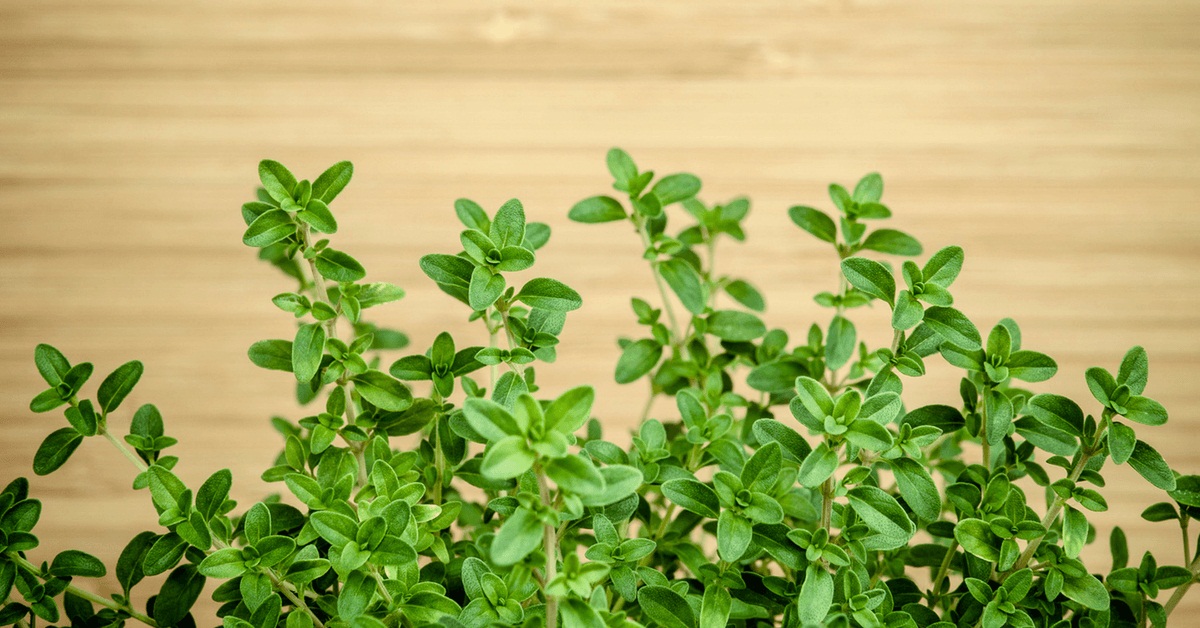

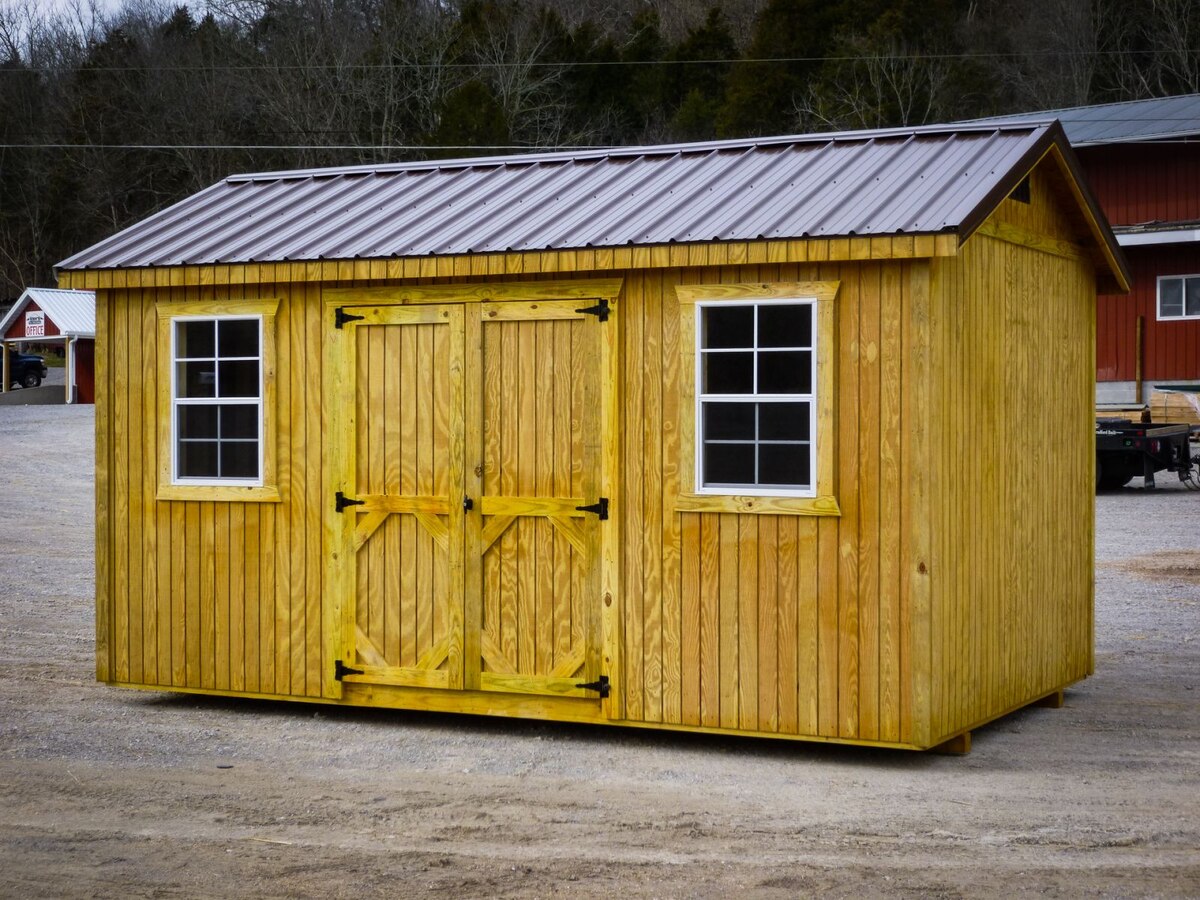
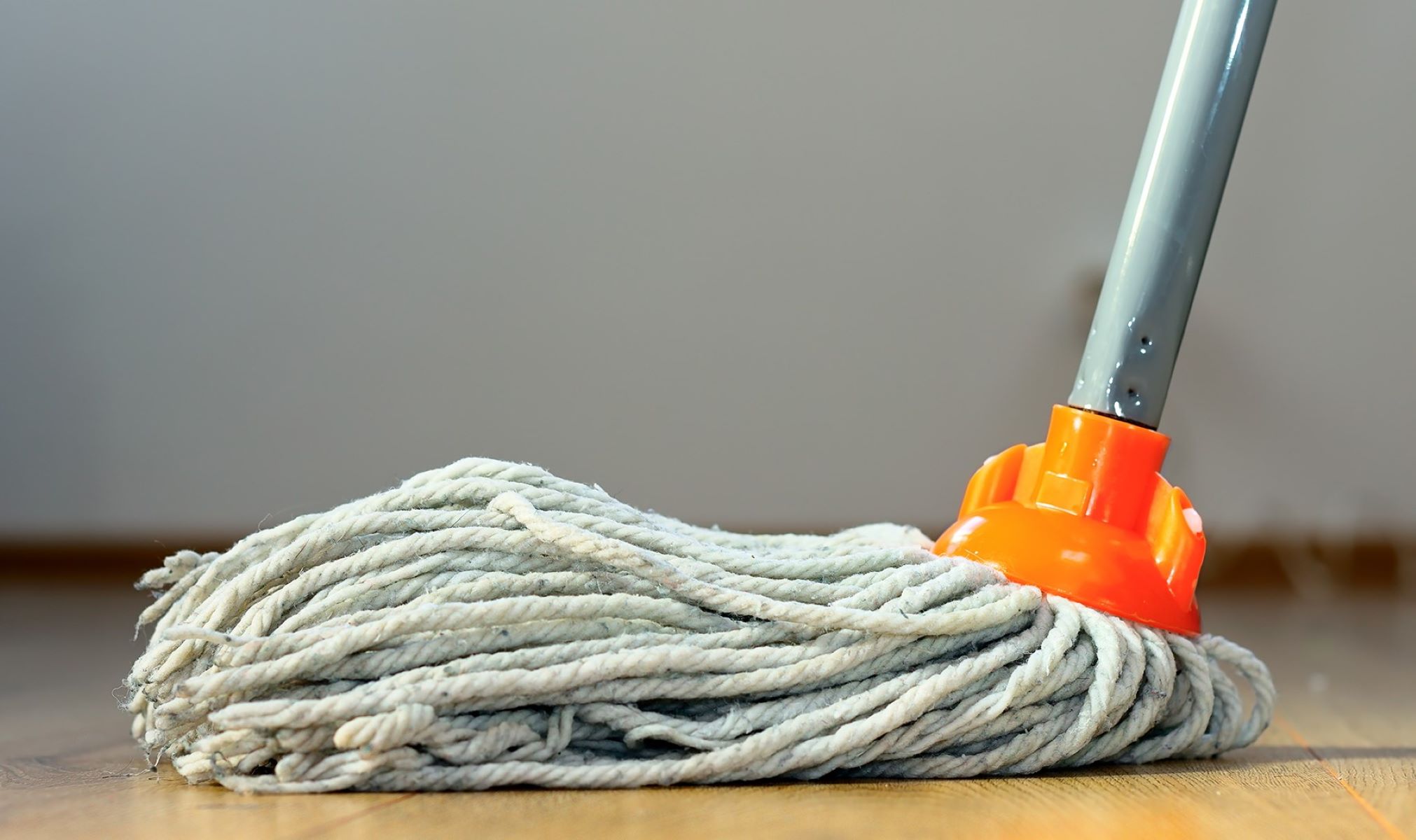

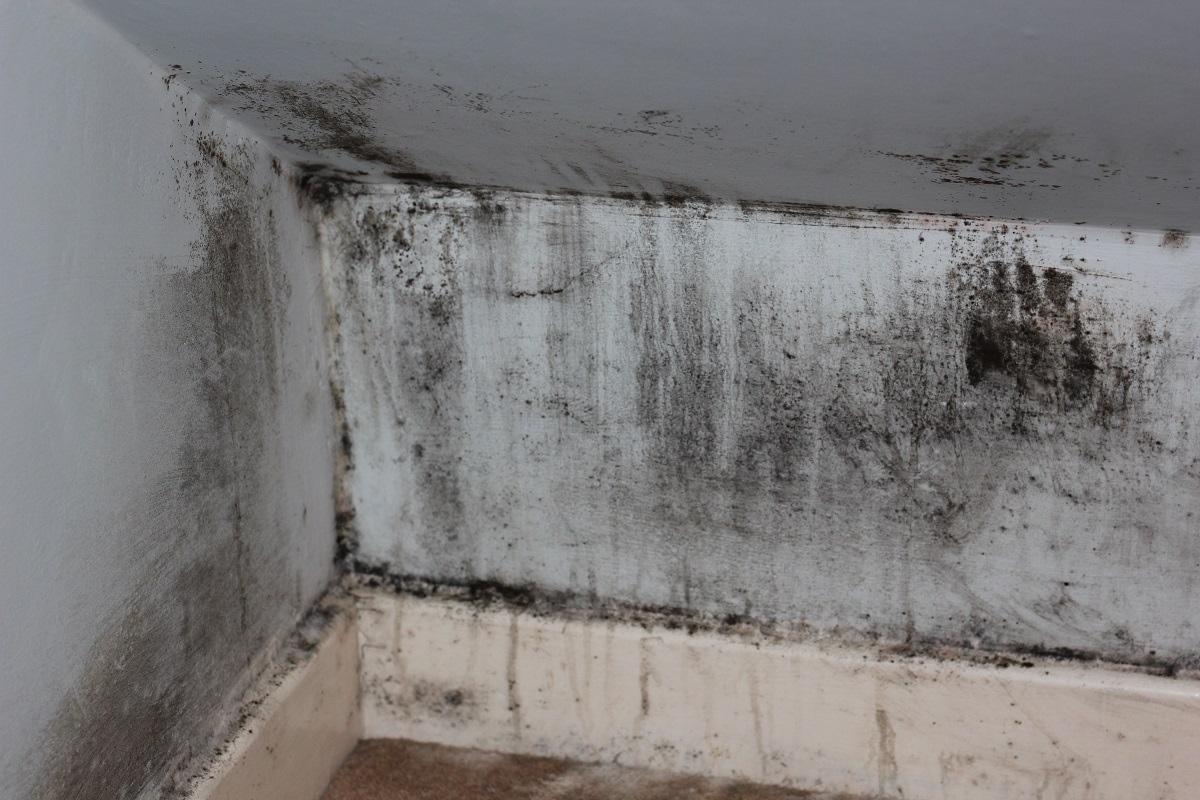

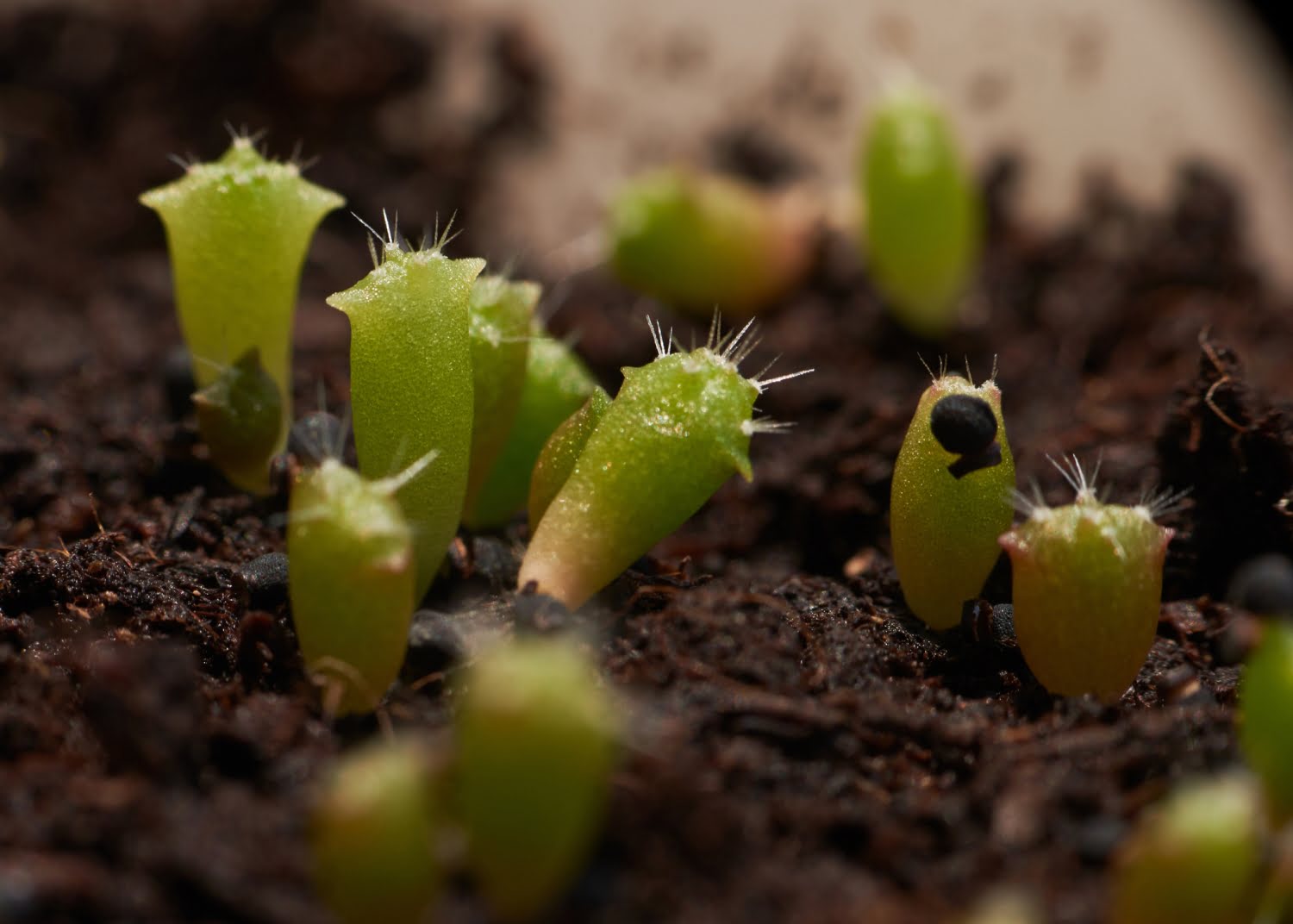
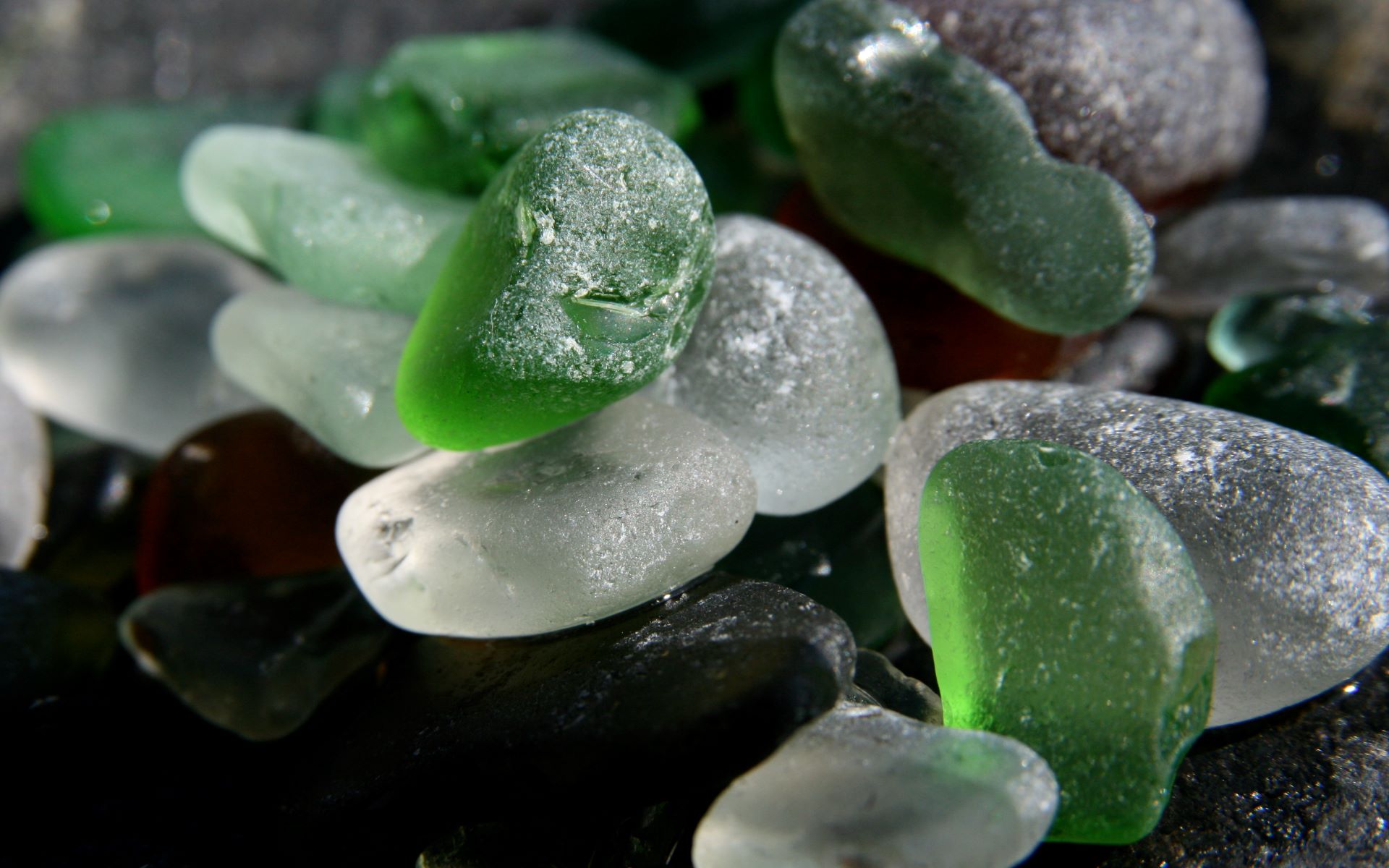

0 thoughts on “What Does Mold Look Like On Ceiling”